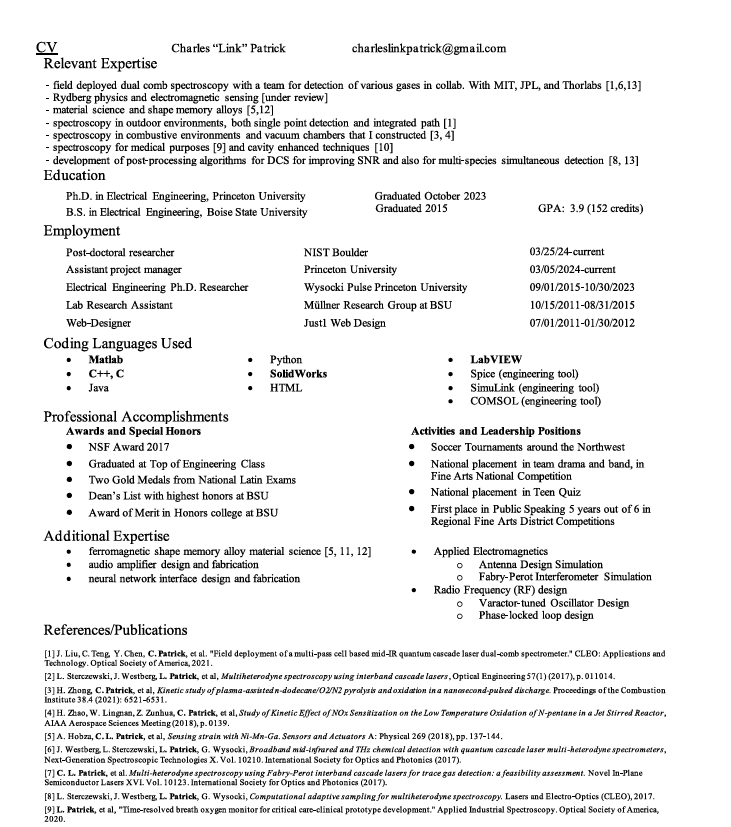I'm an electrical engineer that specializes in atomic physics and laser spectroscopy
Currently working at Frequency Electronics developing Rydberg-based technologies.

PhD in Electrical Engineering
Princeton University
 Mountain Project
Mountain ProjectPublications
Check out my scholarly articles via the links below
but TLDR is... First I published on magnetic alloy shape-shifters with a focus on image processing. And then I published on laser spectroscopy with a focus on magneto-enhancement.

Thesis
Magneto-Optical Enhancement For Spectroscopic Methods: High-Finesse Cavity Spectroscopy And Dual Comb Spectroscopy
Princeton University
Department of
Electrical Engineering
Adviser: Gerard Wysocki
November 2023
Faraday rotation and Zeeman splitting describe the rotation of the polarization plane and the attenuation of polarized light during an interaction between light and matter while a magnetic field is applied axially with respect to the propagation of light. In this thesis, methods of using this phenomenon to enhance spectroscopic sensitivity are modeled and compared. Also in this thesis, Faraday rotation is used to enhance the selectivity and sensitivity for cavity enhanced spectroscopy (CES) methods and dual comb spectroscopy (DCS).
My CV
I'm an engineer that was raised on an elk ranch. Even though I have a PhD, I collect all skills. I've hoisted the spectrometer we made into the truck, driven the stick-shift across the country (fixing the blown-radiator along the way), charmed the clients over dinner, analyzed the data in the hotel overnight, and then I'll present the results in the morning.
My Graduate Research
Improvement in detection abilities for laser spectroscopy by the use of magnetic fields. Applications range from detecting weapons for home security to detecting biomarkers for medical diagnosis.
Oxygen Project
I'm motivated to push developing technologies for a diagnostic point of care (POC) device using laser spectroscopy. I have developed a handheld device capable of monitoring oxygen in breath. This has many applications and is novel. Most impactfully, this oxygen measurement gives direct insight into metabolic function and ideally will be equipped in hospital rooms in the future. In addition, last year we received funding to build the device, and this year we received more funding to bring this technology into a clinical setting.
Dual Comb Project
Multi-heterodyne spectroscopy refers to the mixing of two laser beams and using the combination to determine the amount of substance present in the area that the lasers travel. More specifically, MHS is a spectroscopic technique that allows the instant measurement of a high frequency optical spectrum. Normally, such a measurement requires moving parts and expensive detection systems, but MHS simplifies the process by using multi-mode lasers. The multi-mode lasers used in this project are also revolutionary because of their extremely small dimensions.
I have recently published research on cavity enhanced FRS methods, testing and preparing the oxygen breath sensor for clinical tests..

Researcher : a maker of plots.... acquiring data, interpreting it, and communicating that data and the conclusions to others.
